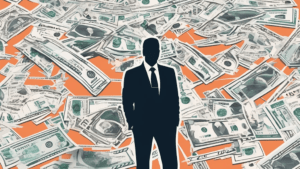
Why Skills-First Leadership Is Replacing the Ivy League Playbook in the C-Suite
The old prestige pyramid—where Ivy League degrees and blue-chip consulting backgrounds paved the way to the CEO seat—is cracking.

January 13, 2022: -The Federal Reserve is behind the curve when it comes to shrinking the balance sheet, according to UBS Global Wealth Management’s Kelvin Tay.
On Tuesday, Fed Chairman Jerome Powell said that he had expected a series of interest rate hikes this year, along with other reductions in the great help the central bank has provided during the pandemic.
“If you take a step backward and you listen to what he said. He hasn’t acknowledged that the Federal Reserve is actually behind the curve, but they certainly are,” Tay told CNBC on Wednesday.
Tay noted U.S. stock markets are doing relatively well, and corporate earnings in the second and third quarter of the previous year were also at “multi-decade highs.”
“And at this point, they are still printing. So you must wonder why they are still printing at this level, right?” he said, adding critical developments in the future will be how fast and how much the Fed shrinks its balance sheet.
Investors are awaiting Wednesday’s critical inflation data to assess the economic picture and the Fed’s next move.
The U.S. central bank spooked investors in the previous week after minutes of its December meeting signaled members were ready to tighten monetary policy aggressively than previously expected.
It indicated it might be ready to start raising interest rates, dial back on its bond-buying program, and engage in high-level discussions about reducing holdings of Treasurys and mortgage-backed securities.
“There is a 75% chance that the Federal Reserve will hike in March when tapering ends. The debate is if it’s two or three hikes where the market is concerned. It could be four hikes this year,” he said.
He added there could be complications significantly if supply chain pressures ease in the coming months, reducing inflation expectations in the future.
“That means the Federal Reserve may not have to start normalizing the balance sheet as early as we expect,” Tay explained; the situation at this stage remains fluid.
Tay also underlined that the Fed’s faster policy tightening cycle is likely to impact Asian countries, emerging markets in the region.
“If your U.S. Treasury yields on a 10-year basis rise to about 2% and 2.5%, then the yields on this part of the world where the government sovereigns are concerned will have to behave accordingly,” he said. This will affect a few of the economies in Asia, given their higher debt levels, he added.

The old prestige pyramid—where Ivy League degrees and blue-chip consulting backgrounds paved the way to the CEO seat—is cracking.

Loud leaders once ruled the boardroom. Charisma was currency. Big talk drove big valuations.

But the CEOs who make history in downturns aren’t the ones with the deepest cuts

Companies invest millions in leadership development, yet many of their best executives leave within a few years. Why?

The most successful business leaders don’t just identify gaps in the market; they anticipate future needs before anyone else.

With technological advancements, shifting consumer expectations, and global interconnectedness, the role of business leaders

Maushum Basu is a visionary leader who inspires his team with a clear, compelling purpose. Unafraid to take calculated risks, he understands that growth often stems from change and innovation. His deep commitment to both Airia Brands, Inc.

When speaking with Martin Paquette, one thing is immediately apparent: he’s honest. His transparency is refreshing. While many shy away from such vulnerability, Paquette sees it as a force to reckon with. The incredible emotional intelligence speaks to years of looking within—it’s also what allows him to acknowledge his mistakes gracefully and use them as opportunities to innovate.

Marina Charriere, CEO of Star Drug Testing Services, Star Drug Testing Services (Windsor Park), and First Defence Face Masks go hand in hand. Star is a drug and alcohol testing facility, and First D F M is a face mask company.

Lejjy Gafour, CEO, CULT Food Science Corp. Lejjy is a self-taught entrepreneur and experienced company operator who made his start creating opportunities at the young age of 14, and he has been working, leading, and building businesses ever since.


Leave us a message
Subscribe
Fill the form our team will contact you
Advertise with us
Fill the form our team will contact you